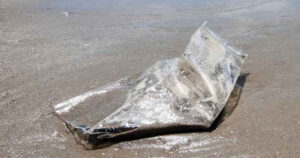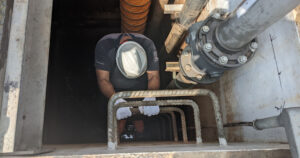Hydrogen sulfide (H2S) is a colorless, flammable, and extremely hazardous gas known for its distinctive “rotten egg” smell. This gas occurs naturally in crude petroleum and natural gas and can also be produced by the breakdown of organic matter and human or animal wastes, such as sewage. Due to its properties, hydrogen sulfide can pose significant risks, especially in poorly ventilated areas like basements, manholes, sewer lines, and underground telephone or electrical vaults.
Detection by Smell
One of the primary ways to detect hydrogen sulfide is by its smell. However, relying on your sense of smell is not a reliable method for detecting the gas’s presence. Continuous low-level exposure or higher concentrations can cause you to lose your ability to smell the gas, even though it is still present. At high concentrations, this ability can be lost instantly. Therefore, it is crucial not to depend on your sense of smell for indicating the continuing presence of hydrogen sulfide or for warning of hazardous concentrations.
Health Effects
The health effects of hydrogen sulfide exposure vary depending on the concentration and duration of exposure. Asthmatics may be at greater risk. Here are the potential health effects at different concentration levels:
- Low concentrations: Irritation of the eyes, nose, throat, or respiratory system; effects can be delayed.
- Moderate concentrations: More severe eye and respiratory effects, headache, dizziness, nausea, coughing, vomiting, and difficulty breathing.
- High concentrations: Shock, convulsions, inability to breathe, coma, and death; effects can be extremely rapid, occurring within a few breaths.
Safety Precautions
Before entering areas where hydrogen sulfide may be present, it is essential to take several safety precautions:
- Testing the Air: The air should be tested for the presence and concentration of hydrogen sulfide by a qualified person using appropriate test equipment. This individual will also determine if fire or explosion precautions are necessary.
- Ventilation: If hydrogen sulfide is detected, the space should be ventilated to reduce the gas concentration.
- Personal Protective Equipment (PPE): If the gas cannot be removed, use appropriate respiratory protection and any other necessary PPE, rescue, and communication equipment. Atmospheres containing high concentrations (greater than 100 ppm) are considered immediately dangerous to life and health (IDLH), and a self-contained breathing apparatus (SCBA) is required.
Conclusion
Hydrogen sulfide is a dangerous gas that requires careful handling and awareness. By understanding its properties, health effects, and necessary safety precautions, individuals can protect themselves and others from potential harm. Always ensure that areas with possible hydrogen sulfide presence are tested and ventilated, and use the appropriate protective equipment when necessary.








